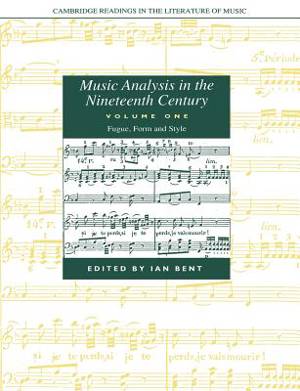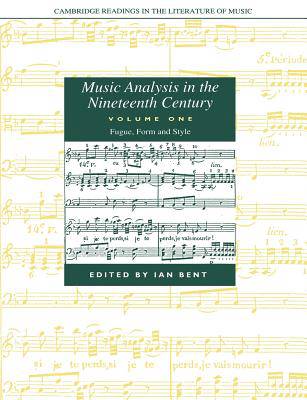
- Afhalen na 1 uur in een winkel met voorraad
- Gratis thuislevering in België vanaf € 30
- Ruim aanbod met 7 miljoen producten
- Afhalen na 1 uur in een winkel met voorraad
- Gratis thuislevering in België vanaf € 30
- Ruim aanbod met 7 miljoen producten
Zoeken
Music Analysis in the Nineteenth Century
Volume 1, Fugue, Form and Style
€ 50,45
+ 100 punten
Omschrijving
This book demonstrates, in fascinating diversity, how musicians in the nineteenth century thought about and described music. The analysis of music took many forms (verbal, diagrammatic, tabular, notational, graphic), was pursued for many different purposes (educational, scholarly, theoretical, promotional) and embodied very different approaches. This, the first volume, is concerned with writing on fugue, form and questions of style in the music of Palestrina, Handel, Bach, Mozart, Beethoven and Wagner and presents analyses of complete works or movements by the most significant theorists and critics of the century. The analyses are newly translated into English and are introduced and thoroughly annotated by Ian Bent, making this a volume of enormous importance to our understanding of the nature of music reception in the nineteenth century.
Specificaties
Betrokkenen
- Uitgeverij:
Inhoud
- Aantal bladzijden:
- 392
- Taal:
- Engels
- Reeks:
Eigenschappen
- Productcode (EAN):
- 9780521611909
- Verschijningsdatum:
- 11/11/2004
- Uitvoering:
- Paperback
- Formaat:
- Trade paperback (VS)
- Afmetingen:
- 189 mm x 246 mm
- Gewicht:
- 698 g

Alleen bij Standaard Boekhandel
+ 100 punten op je klantenkaart van Standaard Boekhandel
Beoordelingen
We publiceren alleen reviews die voldoen aan de voorwaarden voor reviews. Bekijk onze voorwaarden voor reviews.










